Safety deposit box keys are unique. They differ from regular keys in shape and size. 3 Most people don’t know what these keys look like until they need one. This lack of familiarity can cause problems if a key is lost or damaged.
I’ve worked with banks for 15 years, handling safety deposit boxes daily. I’ve seen every type of key and lock system. 1 Trust me, knowing your key’s features is crucial. It helps you spot issues early and keeps your valuables secure.
Ready to learn about safety deposit box keys? Let’s explore their key features and types. 2
Key Takeaways
Safety deposit box keys are flat, elongated, and have small bows with intricate cuts along the blade for high security.
Common types include flat skeleton keys, double-bitted keys with cuts on both edges, and tubular keys with circular shafts.
Most banks use a dual-control system requiring two keys – the customer’s and a bank employee’s – to open a safety deposit box.
Replacing a lost safety deposit box key can cost $50-$400, depending on whether the box needs to be drilled open.
New technologies like RFID tags and biometric scans (fingerprints, facial recognition) are improving safety deposit box security and convenience.
Table of Contents
Recognizing Features of Safety Deposit Box Keys
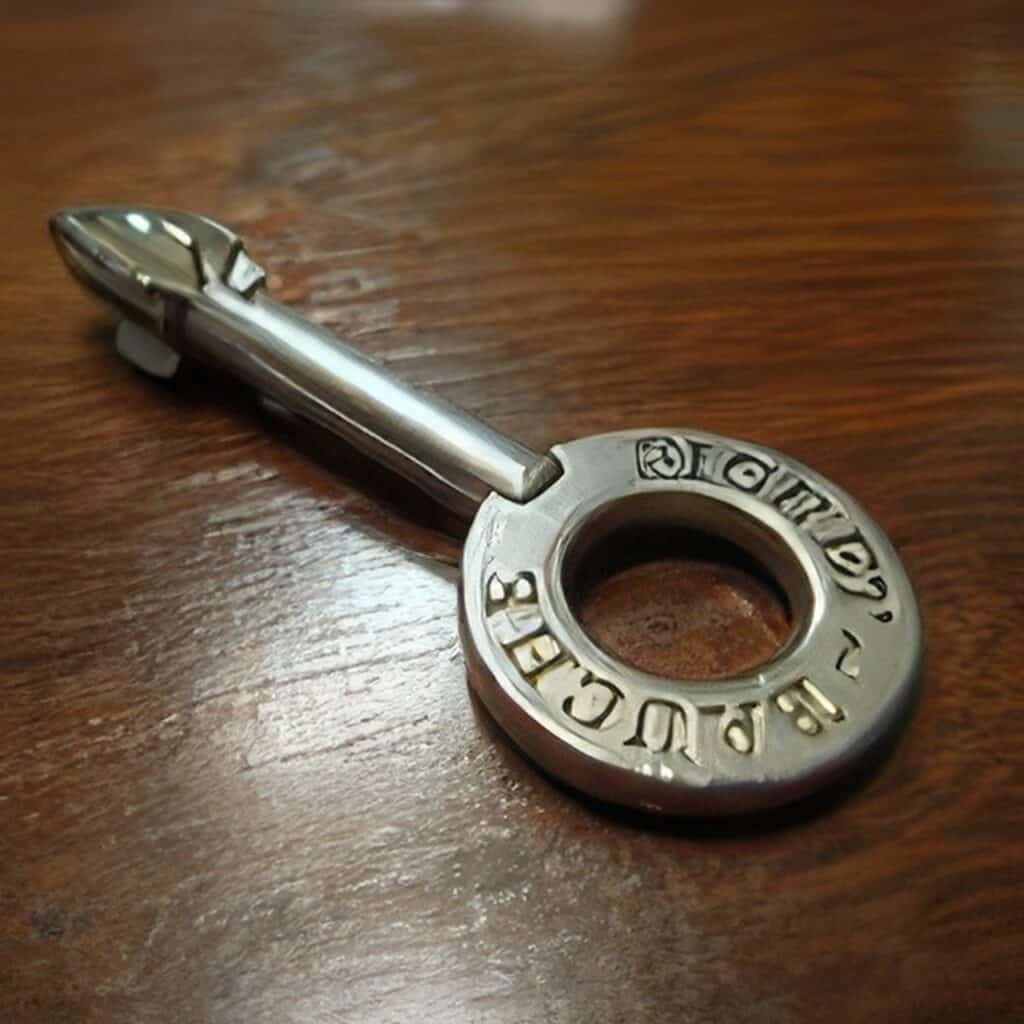
Safety deposit box keys have unique designs to match their specialized locks. Their distinct shapes and intricate cuts set them apart from regular keys, ensuring high security for your valuables.
Distinct Characteristics
Safe deposit box keys stand out with unique features. They’re typically flat, with small key bows and intricate cuts along the blade. These keys often have a distinct numbering system etched on the bow for identification.
Luxury safety deposit boxes may use more sophisticated keys with advanced security features. 2
The key to security is in the details.
The nose design of safe deposit locks varies widely. Different nose sizes, heights, and quantities create diverse key profiles. This complexity enhances security by making unauthorized duplication extremely difficult. 1 Let’s explore the various types of safety deposit box keys and their specific attributes.
Composition and Styling
Building on the distinct characteristics, safety deposit box keys boast unique compositions and styles. These keys are crafted from durable metals like brass or nickel-silver alloys.
Their design prioritizes strength and longevity to withstand frequent use. 3
Most safety deposit box keys feature a flat, elongated shape with specific cuts along the edge. These cuts correspond to the lock’s internal mechanism. The key’s head often displays a number or code for identification.
Some keys incorporate intricate patterns or grooves to enhance security. Banks and credit unions typically provide two identical keys for each box, ensuring backup access. 2
Varieties of Safety Deposit Box Keys
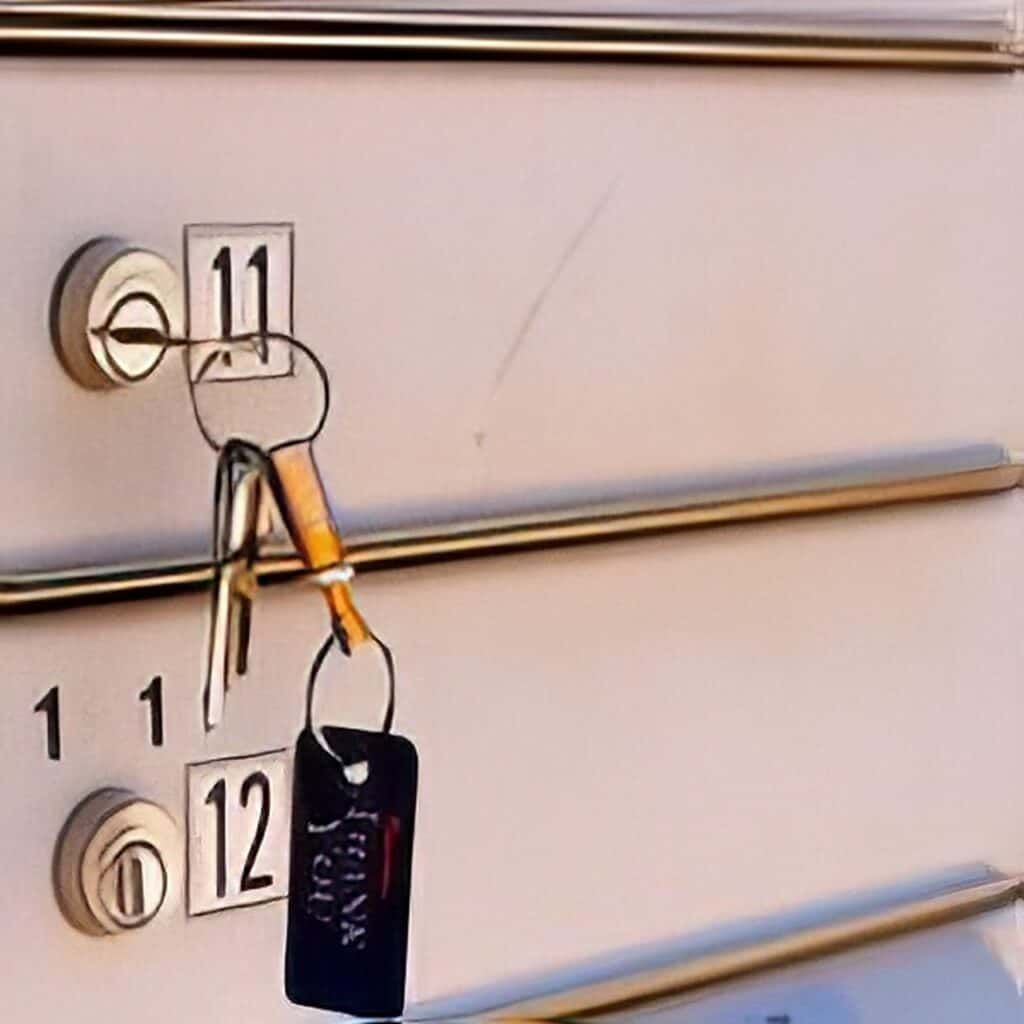
Safety deposit box keys come in different shapes and sizes. Each type has unique features for specific lock mechanisms.
Characteristics of Flat Skeleton Keys
Flat skeleton keys feature a simple, elongated design with a long shaft and a single, flat blade at the end. These keys typically have shallow cuts along one edge of the blade, allowing them to bypass wards in locks.
The size and cut of the key’s bit, as well as the diameter of its barrel, determine its fit with a lock. 4
Antique flat skeleton keys often possess ornate designs on their bows, adding to their aesthetic appeal. These keys can range in price from $10 for basic models to $1,000 for rare, intricately detailed specimens. 4 Many people now repurpose these keys as decorative items or jewelry, transforming them into unique necklaces or wearable art pieces. 5
Features of Double-bitted Keys
Double-bitted keys are the standard for safety deposit boxes. These keys have cuts on both top and bottom edges, creating a unique profile. The dual-sided design increases security by requiring precise alignment to operate the lock.
Safety deposit box keys typically have small bows and are made of durable metals. They’re designed to resist duplication, enhancing protection. A dual-controlled two-key lock system requires both the customer’s key and a bank employee’s key to open the box, adding an extra layer of security. 1
The security of a safety deposit box lies in its dual-key system – a symphony of precision and trust. 3
Description of Tubular Keys
Tubular keys feature a circular shaft with cuts around its circumference. These unique keys fit into a cylindrical keyway with several pin stacks arranged in a circle. The design offers superior security compared to traditional pin tumbler locks.
Tubular keys resist picking attempts and require specialized equipment for duplication. 6
Vending machines, safes, and high-security cabinets often utilize tubular lock systems. The keys’ distinctive shape provides enhanced key control for businesses and institutions. Tubular keys typically have 6-8 cuts of varying depths along their circular edge.
This configuration allows for thousands of possible key combinations, boosting protection against unauthorized access. 1
Operation of Safety Deposit Box Keys
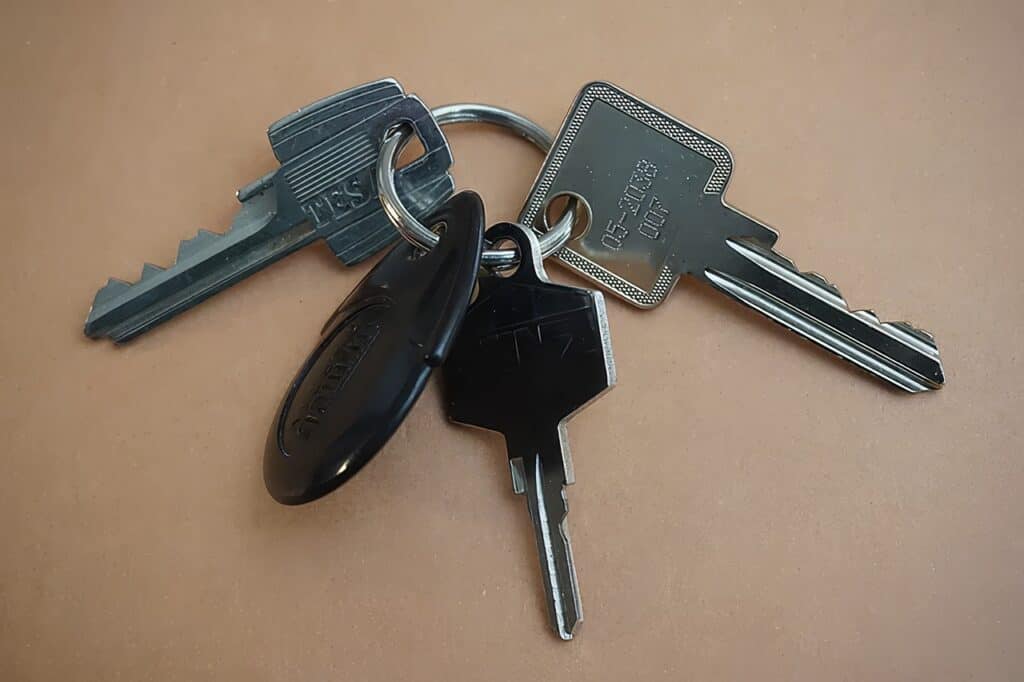
Safety deposit box keys work through precise interaction with the lock’s internal mechanism. These keys engage with specific pins or levers inside the lock, aligning them to allow the box to open.
Mechanics of Lock Interaction
Safe deposit box locks employ a dual-control system. Two keys – one held by the renter, one by the bank – must be inserted and turned simultaneously to open the box. This mechanism ensures heightened security, preventing unauthorized access. 3 The lock’s internal components, including tumblers and levers, align precisely when both keys are used correctly.
Security is not a product, but a process. – Bruce Schneier
Modern safe deposit boxes may feature electronic locks or biometric scanners. These advanced systems often integrate RFID technology or fingerprint recognition for enhanced protection.
Despite technological advancements, many banks still prefer traditional mechanical locks for their reliability and simplicity. 1 The average cost to drill a safe deposit box, if keys are lost, ranges from $150 to $400.
Security and Key Duplication Measures
Banks take safety deposit box security seriously. They use dual-control locks, requiring both a guard key and renter key to open. 3 This system prevents unauthorized access, even by bank staff.
Key duplication is strictly forbidden. Banks implement rigorous ID checks and verification steps during lock replacements. They use a mix of traditional locks, mechanical combinations, and electronic systems for added protection.
Renters must safeguard their keys to maintain box integrity. Losing a key can lead to costly lock drilling and replacement. 2 Some banks now offer high-tech options like RFID or biometric access for enhanced security.
These measures aim to protect valuable contents from theft or tampering.
Steps to Follow If You Lose Your Safety Deposit Box Key
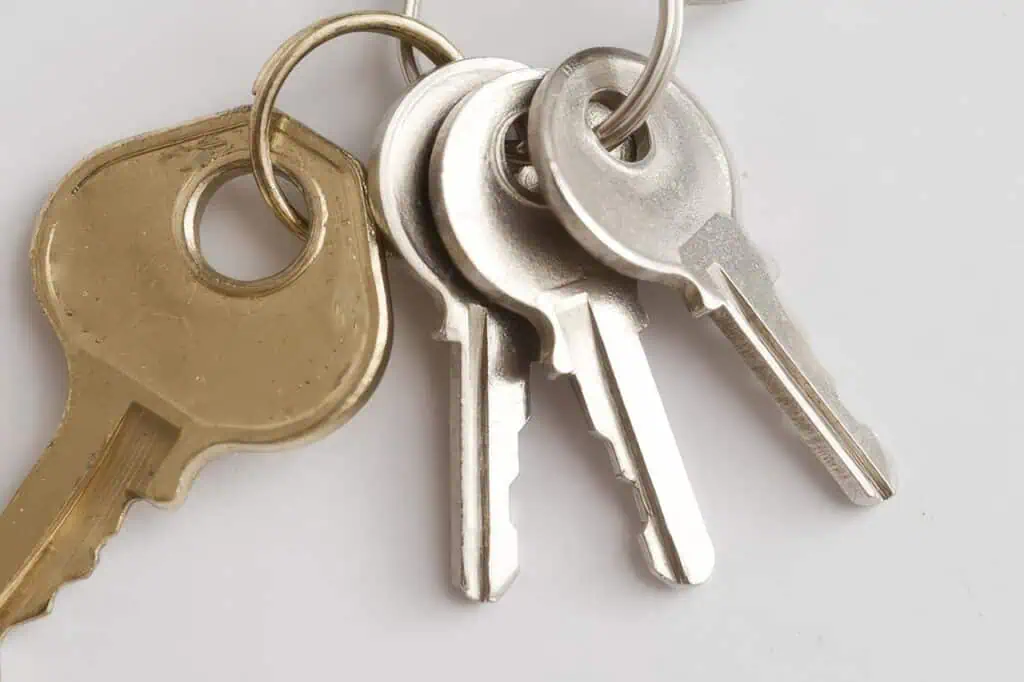
Losing your safety deposit box key? Don’t panic. Act fast to secure your valuables and minimize hassle.
Immediate Actions
Lost your safety deposit box key? Act fast. Call your bank immediately. Report the missing key and request access to your box. The bank will verify your identity through rigorous processes.
They’ll likely ask for multiple forms of ID and proof of box ownership. 8
Next, review your rental agreement. Check for duplicate key options or locksmith procedures. Some banks offer key replacement services. Others require professional locksmith intervention.
Costs vary, but expect to pay $100-$300 for key replacement or box drilling. 7 Consider insurance coverage for valuable contents during this process.
Associated Costs
Replacing a safety deposit box key can hit your wallet hard. Banks typically charge $50 to $100 for a new key. If drilling becomes necessary, costs skyrocket to $150-$200, with some institutions demanding up to $400. 7 These fees don’t include annual rental charges, which range from a few bucks to several hundred dollars. 9 Smart key management saves cash and hassle.
Advances in safety deposit box technology aim to reduce these expenses and enhance security.
Advances in Safety Deposit Box Key Technology
Safety deposit box technology has evolved. RFID and biometric systems now offer advanced security options.
Application of RFID Technology
RFID technology revolutionizes safety deposit box security. Banks now embed tiny RF tags in keys, enhancing protection and user convenience. These smart keys communicate wirelessly with box locks, allowing instant access verification.
The system optimizes tag performance, ensuring reliable reads even in metal-rich environments. Advanced encryption safeguards data transmission, thwarting unauthorized access attempts. 10
RFID integration enables real-time tracking of box usage. Banks can monitor access patterns, detect anomalies, and prevent fraud more effectively. The technology also streamlines inventory management, reducing manual checks.
Some institutions pair RFID with biometrics for multi-factor authentication, further bolstering security protocols. This cutting-edge approach minimizes key loss risks and simplifies customer experiences. 11
Integration of Biometric Security
Biometric security revolutionizes safety deposit box access. INKAS® Safes leads the charge, integrating fingerprint scans, facial recognition, and iris scans into their high-tech boxes. 12 This tech boost eliminates the need for physical keys, enhancing both security and convenience. Users simply present their unique biological traits to open their box – no more lost keys or forgotten combinations.
Digital monitoring systems and smart connectivity take these boxes to the next level. Remote access control allows banks to manage permissions and track usage in real-time. Climate control tech protects sensitive items from environmental damage. 13 These advancements create a safer, more efficient banking experience for customers seeking top-tier protection for their valuables.
People Also Ask
What’s special about safety deposit box keys?
Safety deposit box keys are unique. They’re not like regular keys. These keys work with cylinder locks or lever locks in bank vaults. They’re designed for security and can’t be easily copied.
How do banks keep safety deposit boxes secure?
Banks use multiple security measures. They have combination locks, CCTV, and strict access rules. The boxes are often in fire-resistant, water-resistant vaults. Only authorized people can enter.
Can I store anything in a safety deposit box?
Not everything. You can keep important papers, jewelry, and small valuables. But avoid storing cash, illegal items, or perishables. The FDIC doesn’t insure box contents.
What happens if I lose my safety deposit box key?
Don’t panic. Contact your bank immediately. They’ll help you access your box. You might need to pay for a new lock. Always keep a spare key in a safe place.
Are digital safety deposit boxes available?
Yes, some banks offer digital options. These use passkeys or security keys instead of physical keys. They store your data “in the cloud”. It’s a modern take on traditional boxes.
How do I set up power of attorney for my safety deposit box?
You’ll need to provide the bank with legal documents. This includes a power of attorney form. The person you choose becomes your attorney-in-fact. They can then access your box when needed.
References
^ https://www.kcolefas.com/en/insights/safe-deposit-lock
^ https://www.enterprisebanking.com/learning/article/banking-101-what-is-a-safe-deposit-box
^ https://www.kcolefas.com/en/insights/safe-deposit-box
^ https://www.andersonlock.com/blog/collecting-antique-keys/
^ https://kinglocksmiths.com/the-10-key-types-you-should-know-about/
^ https://phoenixezkeys.com/tubular-keys-vs-regular-keys/
^ https://www.trustworthy.com/blog/lost-safety-deposit-box-key
^ https://www.lastingsafe.com/post/open-lock (2024-04-12)
^ https://fastercapital.com/topics/what-happens-if-you-lose-your-safe-deposit-box-key.html
^ https://www.researchgate.net/publication/272999318_RFID_Technology_and_Applications
^ https://www.ncbi.nlm.nih.gov/pmc/articles/PMC3872592/
^ https://inkassafes.com/everything-you-want-to-know-about-a-safe-deposit-box/ (2023-01-17)
^ https://www.steelage.com/blogs/biometric-security-safe-the-role-of-biometric-technology-in-modern-safes
